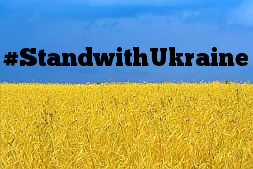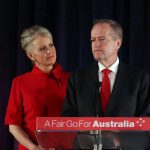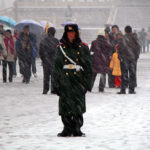The lucky country no longer?

Australia’s golden run is over. In 2020, the country experienced its first recession since 1991, and it is likely that only very rapid growth in the fourth quarter of 2021 will prevent it from experiencing another. Even a strong recovery in 2021 will not mask the country’s major economic challenges. They are long term and structural.
Australia’s luck may finally be running out.
Australians became the richest people in the world during the gold rush of the nineteenth century, and a succession of commodities — wheat, wool, coal, iron ore, natural gas — have kept them rich ever since. Despite the recent market downturn, the demand for Australian iron ore will probably remain quite strong into the future, at least until competitors like the Simandou deposits in Guinea are brought online.
The prospects for other major exports look less rosy. While the global shift towards renewable energy bodes well for some mineral exports, such as those used in batteries and solar panels, the world is transitioning to a post-fossil fuel future and the markets for coal and gas — which together account for around a third of Australian merchandise exports — will decline drastically. Australia’s own climate policy is a grab bag of inadequate measures and vague promises about technology. Maintaining solid economic growth will require a more serious policy framed around global carbon constraints and preferably incorporating an explicit price mechanism.
Unforced domestic policy errors have weakened other pillars of the economy.
The education sector, the essential complement to managing Australia’s resource bounty efficiently was, prior to the pandemic, also the nation’s fourth-largest export. The university sector was excluded from the federal wage subsidy program, JobKeeper, and major cuts have been necessary in many universities to stave off financial ruin.
Just as damaging to the reputation of the education sector was the way in which foreign students were treated. Unlike in Japan, New Zealand or the United Kingdom, international students were excluded from wage subsidy programs, and many who found themselves trapped in Australia were forced to turn to charity for help. The international market in education is competitive, and the comparative lack of government assistance in the depths of the downturn will cost the Australian economy in human capital formation into the future.
Markets, not governments, will decide where Australia’s future comparative advantage in the world economy lies. But governments are responsible for the macroeconomic environment in which labour and capital flow to their most economically advantageous use. Short-term macroeconomic resilience has been supported by expansionist fiscal and monetary policy, which cushioned the pandemic’s impact on employment and incomes.
But the pandemic also revealed weaknesses in the Australian social safety net. Unemployment benefits, for example, were well below the poverty line when the pandemic struck. A temporary correction has been mostly wound back. There will be a modest increase compared to the pre-pandemic rate, but it will still leave Australia’s unemployment benefits as some of the least generous in the OECD, particularly for the newly unemployed.
This is not simply a problem of equity. As the Australian economy adjusts to the post-pandemic world, an inadequate social safety net raises the costs of risk-taking and entrepreneurialism. A more substantial increase in unemployment benefits is the complement to reforms to bankruptcy laws which are designed to increase dynamism in the deployment of capital.
The most important problem facing Australian leaders, however, is one which they cannot solve on their own. The last truly global pandemic was the Spanish flu in 1918, a deadly marker for the start of the interwar years. In the decades between the end of the First World War and the outbreak of the Second, the world broke up into imperial economic blocs. Research now suggests that the pandemic played a big role in this: countries that were harder hit by the virus raised tariffs more than countries elsewhere. The open pre-war order collapsed.
Macroeconomic management has come a long way since the 1920s, fortunately, and the global recession in 2020, while deep, is unlikely to turn into a second Great Depression. But the unfolding collapse of Chinese real estate firm Evergrande is just one harbinger of a more structural slowdown in the world economy.
The most important thing for the Australian economy is that the multilateral system on which it depends does not go the same way as the pre-World War One liberal order. There are worrying developments: the US–China trade war stumbles on and the Washington-Beijing Phase One trade deal was a decisive step towards ‘managed’ and away from free trade.
China’s attempts to coerce Australian policymakers by imposing anti-dumping duties and other measures on major Australian exports were a violation of international norms, but their economic impact was limited by the fact that alternative markets were readily available. The alternatives were mostly in countries with which Australia has no bilateral trade agreements, underlining the importance of the multilateral system.
If the multilateral system decays or fragments, open economies like Australia’s will become more and more vulnerable to great power politics, and security arrangements like the recent Australia–UK–US (AUKUS) Pact will become an economic straitjacket.
Other countries in the region, particularly those in Southeast Asia, face some of the same dilemmas, and working with them to refresh and renew the multilateral order is the top priority for Australian economic and security policy alike.
This article was published by the East Asia Forum.
Tom Westland is a Research Fellow at the Crawford School of Public Policy at the Australian National University.















